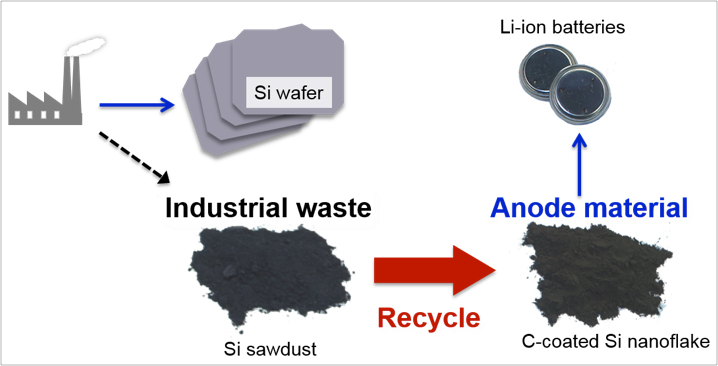Researchers from Japan’s Tohoku University and Osaka University have used the waste material from the production of microchips to produce anodes for lithium-ion batteries.
Making silicon wafers with high purity for electronics is expensive and energy consuming, and 50 per cent of the material essentially ends up on the floor as ‘silicon sawdust’. Traditionally, this has been discarded as industrial waste, but the Japanese engineers have developed a technique to breathe new life into the silicon.
Described in the journal Scientific Reports, the method involves washing the sawdust to remove traces of coolant and metal absorbed during the cutting process. The material is then ‘pulverized’ into silicon nanoflakes between 15 and 17 nanometres thick using a beads milling procedure. A carbon coating is added using chemical vapour deposition. This helps improve the charge/discharge capability of the silicon when used as an anode in a lithium-ion battery.

(Credit: Tohoku University)
According to the research, a test half-cell of the material achieved a constant capacity of 1200 mAh/g over 800 cycles. This is more than three times better than the performance of a conventional graphite anode. The team says that anodes produced using silicon sawdust should be relatively cheap to make and their fabrication should be easy to scale up for the mass market.
Around 90,000 tons of silicon sawdust are produced each year as ‘waste’ from electronics manufacturing. The Japanese research team claims this is enough to meet global demand for anodes in lithium-ion batteries.





Nanogenerator consumes CO2 to generate electricity
Whoopee, they've solved how to keep a light on but not a lot else.